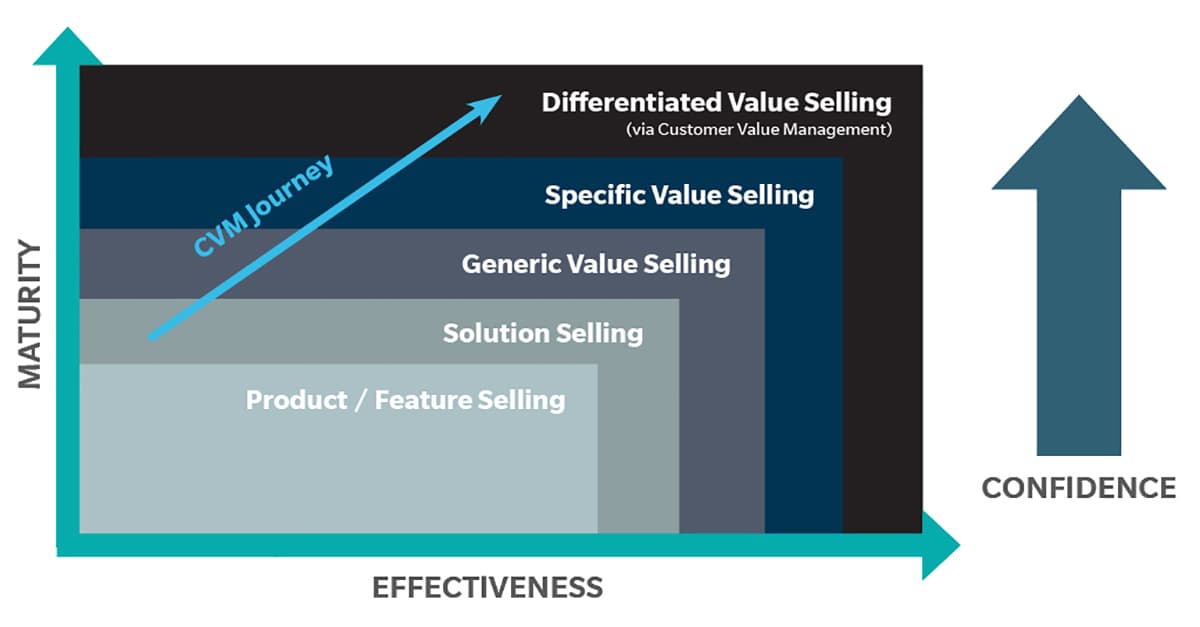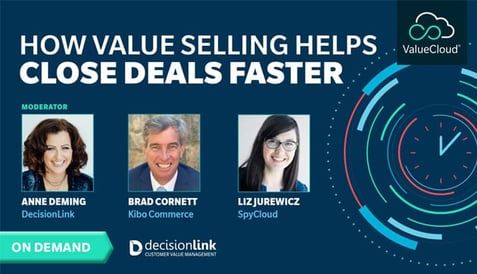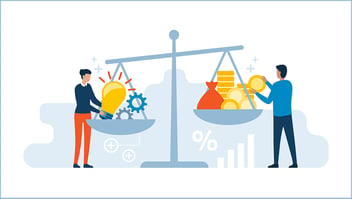Customer Value Management: The Long-tail Sales Strategy

Why customer value management is the most advanced go-to-market approach to enable value conversations across the customer lifecycle
In recent years, value selling has become increasingly popular, replacing more of the feature and function-based sales efforts of the past. In truth, this has been an ongoing evolution of sales strategy, built and refined over decades.
Today, as markets fluctuate due to factors like recessions, global health crises, and political unrest, sales models will continue to evolve. To anticipate and master these upcoming changes, it’s crucial to understand how we got to the current value-based approach, and why it works best for both initial sales and ongoing renewals.
 The First Model: Product-Based Selling
The First Model: Product-Based Selling
Product-based selling focuses on convincing customers to buy a specific product to fill a typically singular need. It’s how many customers approach everyday purchases. Light Bulb went out? You go to the hardware store and get a new one. With product-based selling, the conversation is all about the product’s features—for example, the wattage of the lightbulb, or its color.
The sales process focuses on what the seller has to offer, rather than how the product can address broader customer drivers. Over time, as business problems became more complicated, the limitations of this sales model appeared. Soon, a new model was born: solution selling.
The Shift from ‘What’ to ‘How’: Solution Selling
By focusing on how a product solves a specific problem, companies were able to transition their sales strategies to address growing customer complexity. This approach starts with identifying customers that face the situation that your product uniquely addresses. Back at the hardware store, this means that instead of focusing on features of the lightbulb, the salesperson would figure out what broader lighting issues numerous customers face, such as the need to illuminate their house in an energy-efficient way. More than just selling a lightbulb, the solution sale is an energy-efficient home lighting plan.
Solution selling is the first model to shift from the what to the how of the customer journey. This is the precursor of today’s Customer Value Management approach and ushered in the need for Customer Relationship Management solutions that enabled sales teams to track these broader needs of prospects in a centralized repository.
As product models have been reconceptualized as a service, a further evolution of sales strategies was necessary. With service as a core component of more companies’ offerings, the ongoing and often evolving needs of the customer became the center of the model. This is when being customer-centric became a primary business driver across marketing, systems, sales, and customer support.
A Selling Revolution: Value Selling to Customer Value Management
In an as-a-Service business model, the ongoing value you deliver is essential. When the economic value of using a product can be quantified for each customer’s unique situation, sales teams have a significantly stronger foundation for customer conversations. It’s not about pitching the solution anymore.
Value-based selling puts primary emphasis on the business outcomes of using the product as it specifically relates to that customer. For example, a salesperson at the hardware store would start by asking the customer questions about their particular house and their unique lighting challenges. They would discuss what lighting solutions are currently in place and how they are currently performing for the customer to uncover where they see gaps or unmet needs. They might even find out the customer's plans for the future. Are they considering redecorating or renovations sometime in the near future?
This approach broadens the conversation in a way that builds a more meaningful relationship at the same time it gives the sales team permission to spend more time collaborating with the prospect than simply pitching to them. With value selling, the prospect gets tangible projections of value that can be delivered and a quantifiable way to compare competing proposals.
But ‘value selling’ alone only gets you so far. For this approach to truly succeed, companies must invest in Customer Value Management (CVM) technology to make creating business value propositions accessible across their teams and for every size deal. Automation is the only way to make value-selling scalable.
The Next Frontier: Value Realization
In addition to a more quantifiable pre-sales approach, a major benefit of a CVM platform is that it allows value to be tracked across the entirety of the customer lifecycle, not just as a pre-sales checkbox. This helps streamline the hand-off from sales to customer success. After all, what good is a business case if you can’t prove it was achieved?
The best way to make sure value is delivered, as explained by Geoffrey Moore in his talk at Gainsight Pulse 2022, is to think backward from demand to supply. Start with realizing value, then work on adoption, delivering the solution, selling, marketing, design, and building. In a customer-centric sales environment, the product is built to satisfy the customer’s needs, not the other way around. Value realization is essential to fuel this virtuous circle.
Moore also pointed out that, just like sales, Customer Success is very close to the end user, and its scope has grown to encompass many different responsibilities, including technical support, adoptions and retention, customer insights, and business consulting services. The better customer success tools a business has, the better its Net Revenue Retention will be. NRR is critical in a market that’s heading into a recession because it’s much easier to retain customers than to attract new ones.
Looking forward, businesses need to be proactive rather than reactive, doing everything they can to keep their NRR high and their customers satisfied. This means emphasizing and delivering on value at every stage. Value-based approaches are proven to deliver benefits company-wide and are a tried-and-true way to enrich both customer experience and your company’s bottom line.

Hear firsthand from sales leaders who have learned first-hand how a streamlined approach to value selling can transform your business and shorten your sales cycles: How Value Selling Helps CLOSE DEALS FASTER
Want to learn more about the evolution of sales methodologies? Check out the blogs below or subscribe to our weekly newsletter to stay on top of our latest content.

 ValueCloud
ValueCloud
.png?width=118&height=76&name=Rectangle%20(3).png) ValueCloud Ignite
ValueCloud Ignite
.png?width=92&height=92&name=Rectangle%20(4).png) Free Assessment
Free Assessment
.png?width=100&height=100&name=Rectangle%20(5).png) Watch a Demo
Watch a Demo
.png?width=82&height=96&name=Rectangle%20(6).png) Value Calculator
Value Calculator

.png?width=62&height=51&name=Group%2010%20(1).png) Marketing
Marketing
 Sales
Sales
 Customer Success
Customer Success
 Engage Prospects
Engage Prospects
 Win Deals Faster
Win Deals Faster
 Retain Customers
Retain Customers
.png?width=62&height=62&name=Rectangle%20(8).png) Adopt and Scale
Adopt and Scale
.png?width=54&height=54&name=Rectangle%20(9).png) Cybersecurity
Cybersecurity
 Healthcare
Healthcare
.png?width=54&height=54&name=Rectangle%20(10).png) IT & Software
IT & Software



